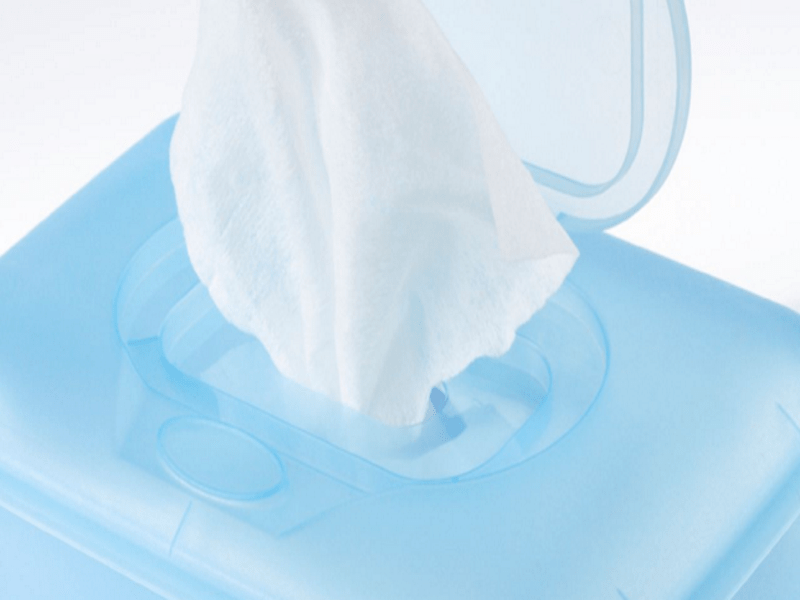A new study from Smithers
The Impact of Sustainability on Nonwovens to 2024 identifies and ranks the 25 most important impacts of across this period. These are sub-divided into
- Renewable and sustainable products and fibres
- Waste prevention
- Cutting water and air pollution
- Wastage and disposal after use
- Government demands, policy and regulations.
While the drive for sustainability is most pronounced in North America and Western Europe, it is a global phenomenon which will permeate the Asian market too across the next five years. Smithers’ analysis finds for example that worldwide government demands, policy and regulations will impact about 55.5% (or 6.1 million tonnes) of all nonwovens produced in 2019.
In this exclusive insight Smithers shares some of the key commercial developments that are responding to this demand:
 Sustainable products and fibres
Sustainable products and fibres
Recycled polyester use in nonwovens is now significant in Europe (over 30% of all polyester fibre used), as is recycled cotton fibres in the US. New materials offer alternative route to a greener future.
Lenzing has introduced Lenzing Web, a spunlaid cellulose nonwoven, where cellulose is dissolved in a solvent and then spun like molten polypropylene in spunlaid nonwovens. Commercialisation is estimated no earlier than 2022.
Polylactic acid, or PLA, is a polymer derived from corn (maize) that is both thermoplastic and renewably sourced. NatureWorks’ PLA Ingeo fibre is already in use in spunlace nonwovens and the manufacturing process is continually improving. This material has been used to replace both polypropylene polymer and fibres, and even polyester in some nonwoven processes. Further R&D is necessary for this biopolymer however, as current PLA grades are not biodegradable and it is still defined as a plastic by the EU’s single-use plastics directive.
Essity meanwhile has announced that it has licensed technology to produce fibres for nonwovens from ‘agricultural waste’.
Waste prevention
Reduce, recycle and reuse fits many aspects of the nonwovens industry, but it leads ultimately to waste prevention.
One example for airlaid nonwovens involves capturing excess fluff wood pulp. Many nonwoven producers that use this raw material – have historically accepted dust losses averaging 2–3%. Fluff wood pulp is a natural fibre with a fibre length distribution that includes a short fibre fraction of 2–3%. Now, these producers have identified new uses for wood pulp dust, from fuel pellets to food additives.
Packaging and distribution can also be optimised for the environment. Nonwoven wipes used to be supplied in plastic tubs, with special dispensing openings. Once the wipes were used, the tub was disposed of. Now, refill packs that can be filled into the saved tubs are becoming popular.
Nonwovens shipped on wooden pallets and wrapped in polyethylene film are increasingly instead being transported in corrugated board with kraft wraps paper, both of which are easily repulpable/recyclable.
Cutting water and air pollution
By 2019, most industrial operations have been operating under relatively strict water and pollution control regulations for decades. The worse pollutants have either been banned outright (DDT, chlorofluorocarbons) or are under strong mandated control (formaldehyde, dioxins).
Lenzing has been a pioneer in this area by using larger quantities of lyocell, which uses a much more sustainable solvent for dissolving wood pulp. Their commercial product, Tencel/Veocel, is widely acknowledged as environmentally sound. Indeed US retailer Costco has replaced cotton with Tencel as a more sustainable option in its Kirkland product line of baby wipes.
Berry Global has also optimised emissions at its plant in Cujik, the Netherlands. The use of steam-heated cylinders for drying and curing nonwovens webs requires a lot of energy and generates heat. To minimise the site’s carbon footprint it has implemented an energy toolkit to identify leakages and rectify them quickly. Berry is also cooperating with local biomass energy producer Bio Energy Centrale Cuijk (BECC). The partners ‘Green Steam’ programme will use the renewable heat for production processes; saving an estimated 8 million m3 of natural gas per year and increase efficiency by 25%.
Wastage and disposal after use
There is also potential to convert used nonwovens into a new generation of products, embracing core principle of a circular economy model.
Don & Low Scotland’s Don & Low has installed third-party recycling line. This is now in operation five days per week on a three-shift system and produces high-quality recycled material. The equipment has a reel feeder mounted directly on a single-shaft cutter. Different types of nonwoven scrap in different colours and sizes are processed. A batch dosing unit adds the final colour to the recyclate depending on the colours of the input material and the required final colour.
Excess short fibre pulp dust generated in nonwoven manufacture can also be repurposed usefully. Application include as fuel pellets that can be burned for energy and heating; or after sterilisation and as thickeners or fibre sources in certain food products. This is established in certain markets; but further gains are achievable.
Regulatory pressure
New pressure on certain disposable nonwoven products will come from the EU’s Directive on Single-use Plastics agreed in May 2019. Entering into effect in 2022 this names both wipes and feminine hygiene products as targets. This will favour product lines such as Pure from P&G that replaces plastics-based nonwovens with an organic cotton-based nonwoven. In 2018 the firm commercialised this as sub-brands in both its Pampers baby wipes and Always feminine hygiene pad lines.
Regulations around plastics are likely to proliferate across the next five years. While spunlaid polypropylene is forecast to remain the largest nonwoven process through to 2024 and beyond; its rate of growth will slow as it is joined by greener alternatives, such as spunlaid PLA and even cellulose. Additionally, spunlaid polypropylene will become more sustainable, with lower waste, recyclability and even the introduction of bio-based polypropylene.
The 25 top trends for boosting sustainability and unlocking future profitability in the global marketplace through new products and processes are analysed and ranked authoritatively in The Impact of Sustainability on Nonwovens to 2024.

